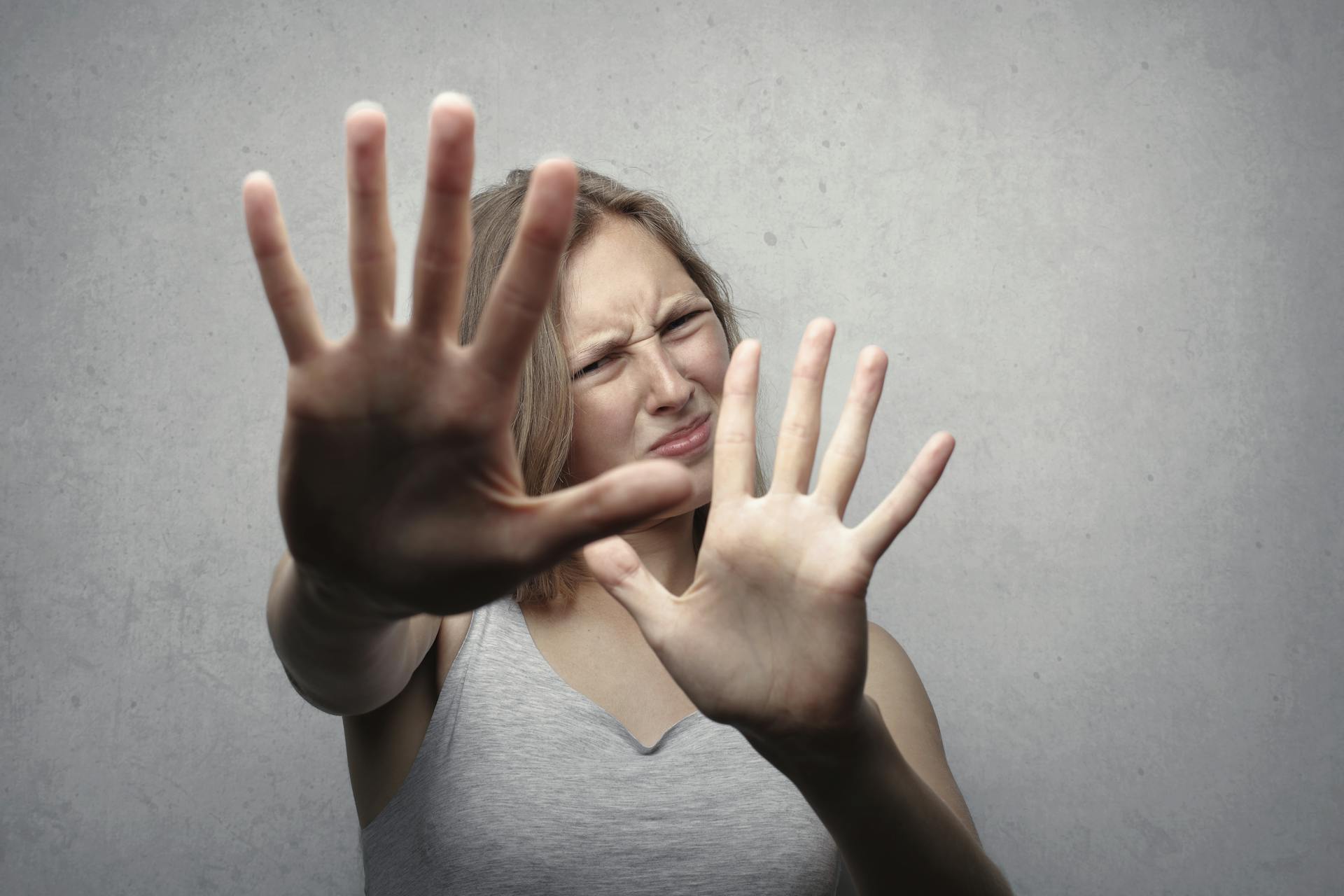
The South Russian Ovcharka is a loyal and protective breed that originated in the Caucasus region. They were bred to guard livestock from predators.
Their thick coats can be either rough or smooth, and they come in a variety of colors, including gray, black, and white. They have a distinctive appearance that's both rugged and handsome.
South Russian Ovcharkas are known for their intelligence and independence, which can make them challenging to train for inexperienced owners. They thrive on structure and clear boundaries.
Their size can range from 24 to 32 inches in height, making them a sturdy and imposing presence.
Physical Characteristics
The South Russian Ovcharka is a large dog.
Its coat sets it apart from other breeds, with a fuzzy, shaggy appearance.
The South Russian Ovcharka has a furry undercoat with a long topcoat.
The texture of the topcoat is similar to that of a goat.
They usually have a white coat, although it's not uncommon for them to also have grey, beige, or white with grey marks.
Their coat is their most distinctive physical trait.
Dog Temperament & Intelligence
The South Russian Ovcharka is a loyal and energetic breed that's always up for a good time. They're confident and fearless, but this can sometimes get them into trouble.
They're naturally protective of their family and territory, which can make them wary of and sometimes aggressive towards other dogs and people they don't know. They can become possessive of their things if they aren't properly trained.
A well-socialized and well-trained South Russian Ovcharka can overcome these traits, but will always have a certain impulse to guard and protect. They're generally affectionate with their family and bond deeply with those who spend the most time with them.
This breed adapts easily to diverse climatic conditions and temperatures, but they need an owner who knows how to display strong leadership. You should show your authority over this flock guard, because if you don't, they may become very dominant with strange people and other dogs.
Explore further: Are Portuguese Water Dogs Good for First Time Owners
Males are stronger and more massive than females, and they were bred to guard their property. They're independent and will respond negatively to nervous activity. They have a dominant reaction, which is their active way of defense.
Socialization is key, especially while they're young. This breed is not for the inexperienced or meek owner. With proper training and socialization, South Russian Ovcharkas can be good with children, but families with young children may want to select another breed since they're protective of their family.
Care and Lifestyle
Taking care of your South Russian Ovcharka at home is a big responsibility, but with the right routine, you can keep your furry friend happy and healthy.
To start, make sure to watch her diet and exercise routine closely. This means supervising her as you would a toddler, keeping doors closed and picking up after yourself to prevent her from getting into trouble.
Brushing her coat at least weekly is also crucial to prevent matting and tangling. You should also brush her teeth at least twice a week to keep them perfect.
A consistent exercise routine is also essential for your South Russian Ovcharka. You should keep her mind and body active, or she'll get bored and start getting into naughty stuff.
Here is a summary of the key things to remember:
- Supervise your pet as you would a toddler
- Brush her coat at least weekly
- Brush her teeth at least twice a week
- Clean her ears weekly
- Exercise her regularly
- Keep her diet consistent and healthy
By following these simple tips, you can help your South Russian Ovcharka live a long, happy, and healthy life.
Care and Lifestyle
South Russian Ovcharkas are a big dog breed, weighing in at 108-115 pounds, so they need plenty of space to run around and exercise. They're not suited for small apartments or homes with tiny yards.
To keep your South Russian Ovcharka happy and healthy, plan for 8-12 years of companionship. With their independent nature, they're happy to entertain themselves, but they still need regular exercise and mental stimulation.
These dogs are naturally protective and will keep a watchful eye on their surroundings, making them excellent guard dogs. However, their powerful build and strong instincts mean they can be intimidating to strangers.
Suggestion: Dog Breeds That Don't Need Grooming

South Russian Ovcharkas are generally laid-back around their family, but they can be standoffish around new people and dogs. Consistent socialization from an early age is crucial to help them become confident and calm in new situations.
If you're considering bringing a South Russian Ovcharka into your family, be prepared to invest time and effort into training and socialization. With patience and consistency, you can develop a strong bond with your dog and help them become a well-behaved member of your household.
If this caught your attention, see: Best All around Dog Breed
Care and Lifestyle
Caring for a South Russian Ovcharka is a big responsibility, but with the right approach, you'll be rewarded with a loyal and loving companion.
First and foremost, make sure your SRO gets plenty of exercise, as they're naturally energetic and athletic dogs. Aim for regular walks and playtime, and consider enrolling them in dog sports or agility training to keep them mentally stimulated.
Brushing your SRO's coat is also crucial, as they can be prone to matting and tangling. Aim to brush their coat at least weekly, and consider using a slicker brush or a pin brush to get rid of any tangles.
A unique perspective: Dogs Breeds That Start with B
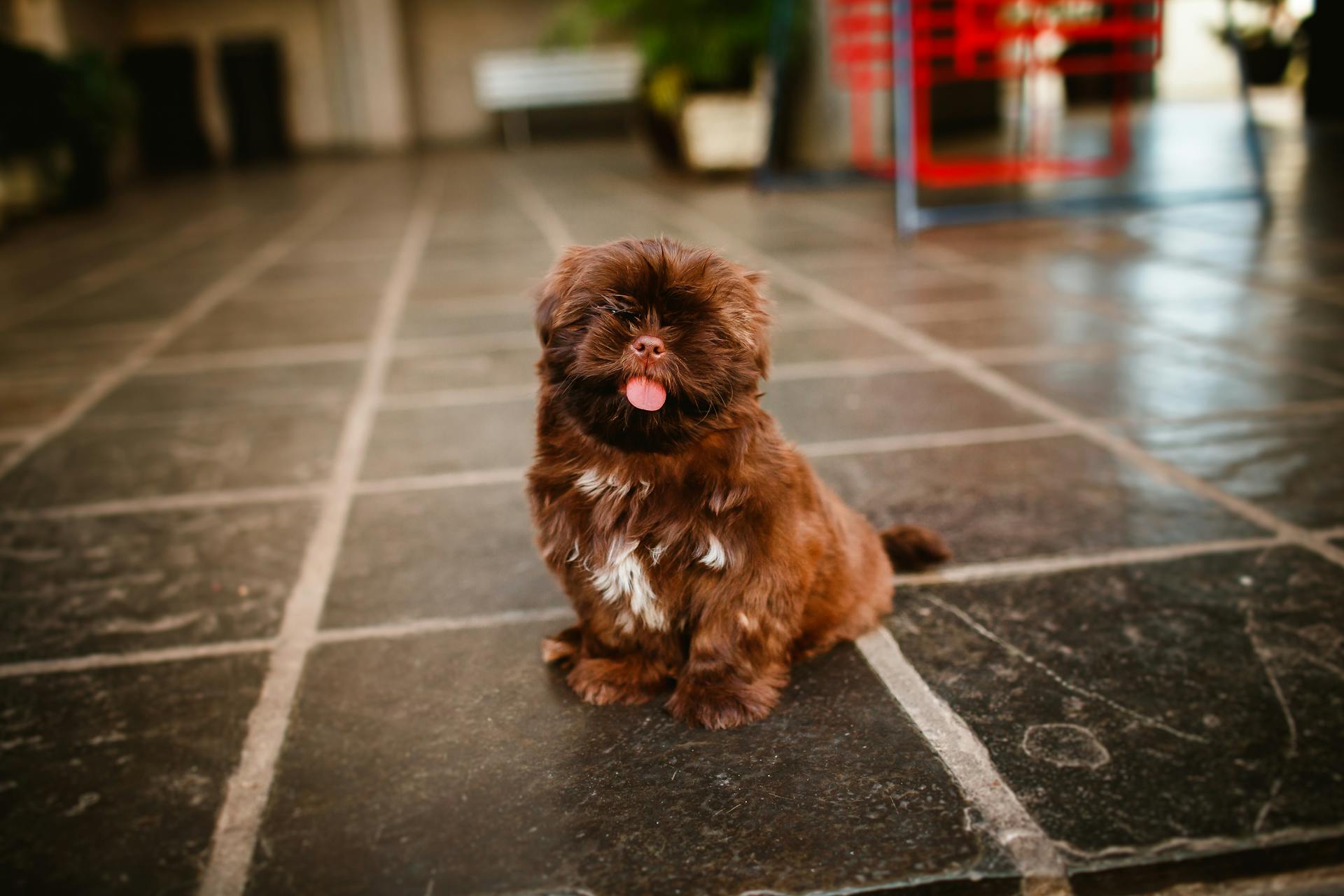
As for their diet, South Russian Ovcharkas are best fed a high-quality, balanced diet that's suitable for their age and size. Avoid giving them people food, as this can lead to obesity and other health problems.
Here are some key facts to keep in mind when caring for your SRO:
- Brush their coat at least weekly.
- Feed a high-quality, balanced diet suitable for their age and size.
- Exercise them regularly, but don't overdo it at first.
- Clean their ears weekly.
- Brush their teeth at least twice a week.
Consistent socialization is also key to raising a well-adjusted SRO. Start training them early, and make sure they meet plenty of new people, dogs, and environments. This will help them develop good manners and reduce the risk of aggression.
Overall, with the right care and attention, your South Russian Ovcharka can thrive and become a beloved member of your family.
Health and Nutrition
South Russian Ovcharkas require a high-quality dog food that is age-appropriate, whether it's commercially manufactured or homemade with a veterinarian's supervision and approval.
You should monitor the amount of food you give your South Russian Ovcharka and reduce the portions or restrict calories if your pup gains weight. Your veterinarian is a great resource to help with nutrition and feeding guidelines.
For another approach, see: Best Dog Food for Rhodesian Ridgeback
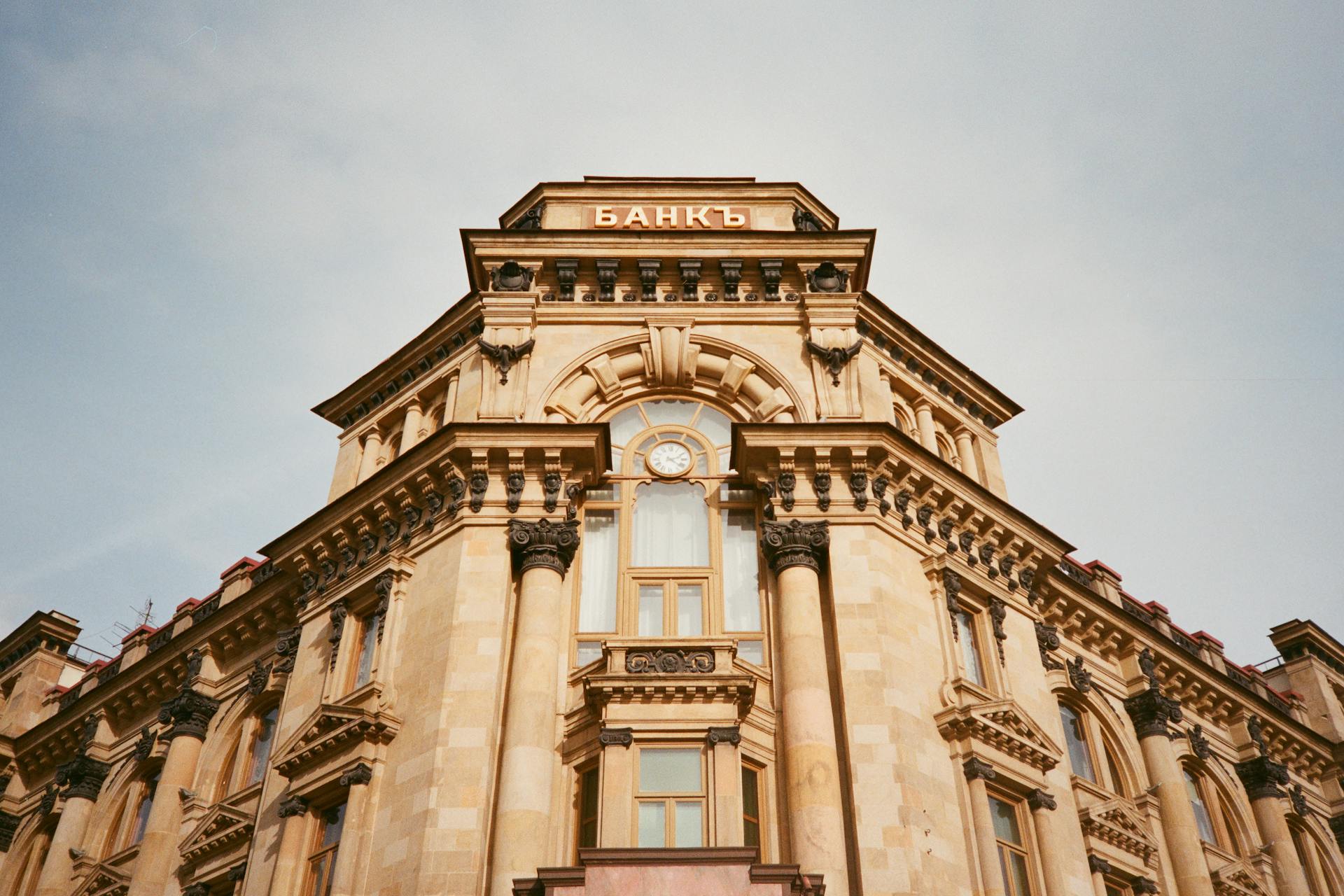
To keep your South Russian Ovcharka looking and feeling her best, you should brush her daily to reduce shedding and keep her clean. You should also inspect for ticks and fleas daily during the summer or other warm weather.
Here are some common health issues that can affect South Russian Ovcharkas:
- Hip dysplasia
- Elbow dysplasia
- Bloat
It's essential to choose a responsible dog breeder who regularly checks their breeding dogs to ensure their puppies are without inherited diseases. This will help you get a South Russian Ovcharka with the best possible health.
What to Watch
As a dog owner, it's essential to be aware of any changes in your South Russian Ovcharka's behavior or physical condition. A change in appetite or water consumption can be a sign that something is off.
If your dog's water consumption is unusually high or low, it's worth investigating.
Tartar build-up, bad breath, red gums, or broken teeth are all signs of dental problems. Regular dental care can help prevent these issues.
Expand your knowledge: Dog Meat Consumption in South Korea
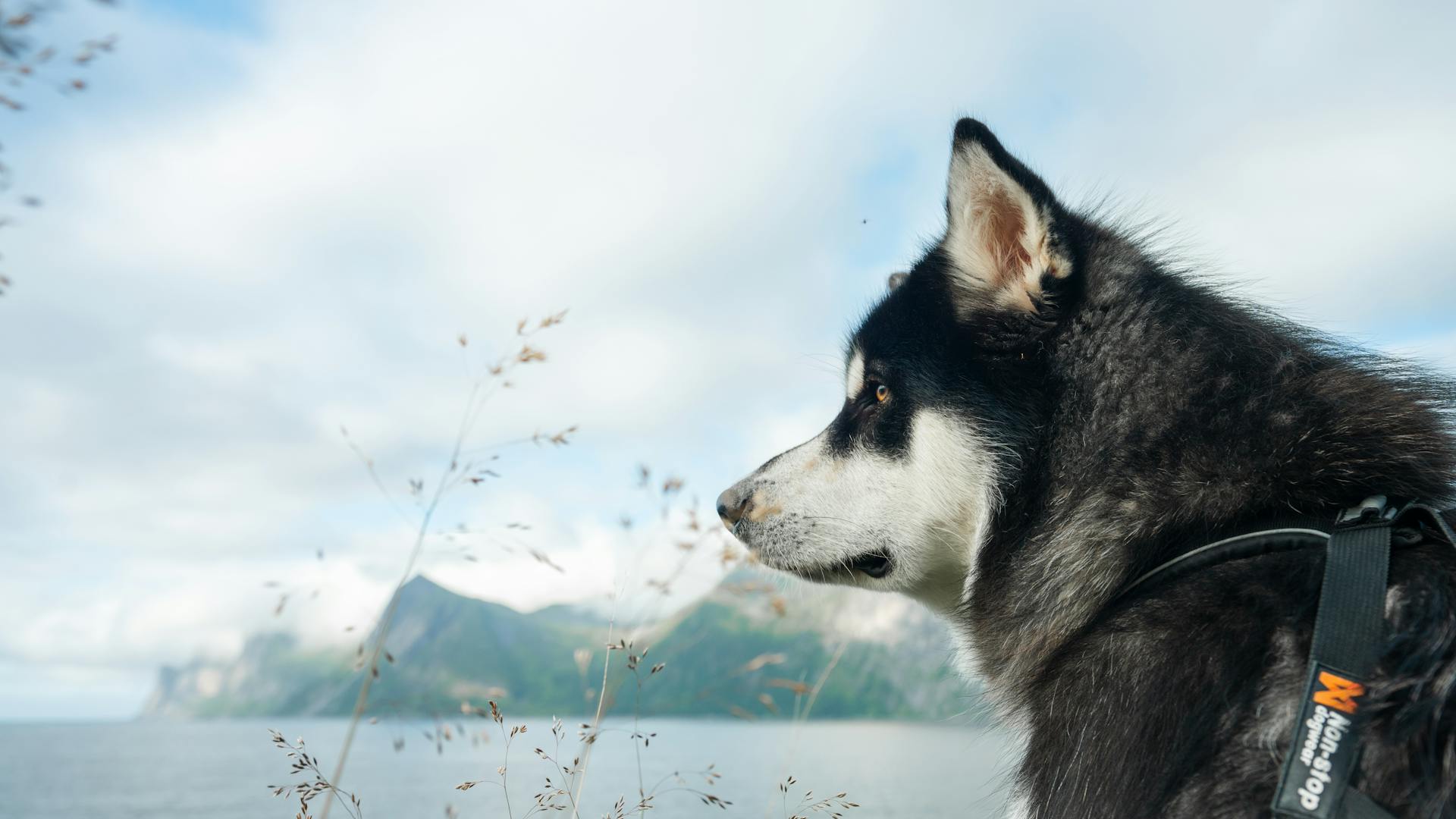
Itchy skin can cause your dog to scratch, chew, or lick excessively, leading to hair loss. This is not only uncomfortable for your dog but can also lead to skin infections.
Lethargy, mental dullness, or excessive sleeping can be indicative of a more serious underlying issue. If you notice any of these symptoms, it's crucial to seek veterinary help.
Fearfulness, aggression, or other behavioral changes can be a sign of stress or anxiety. Identifying the cause of these changes is key to addressing the issue.
A dull coat or hair loss can be a sign of nutritional deficiencies or underlying health issues. Regular grooming can help you detect these changes early on.
Lumps or bumps, regardless of size, should always be checked by a veterinarian. These can be a sign of cancer, infections, or other serious health issues.
See what others are reading: Pembroke Welsh Corgi Health Issues
Nutrition
You'll want to feed your South Russian Ovcharka a high-quality dog food that's age-appropriate, whether it's commercially manufactured or homemade with a veterinarian's supervision.
Commercial diets specifically designed for their life stage and size requirements are a good choice.
Puppies need different nutrients than adult dogs, so they should eat food specially formulated for them.
Large breeds like South Russian Ovcharkas have special nutritional needs as adults and puppies.
Reducing the portions or restricting calories can help if your pup gains weight.
Health and Conditions
South Russian Ovcharkas are prone to developing health conditions, especially as they age. Large dogs like these are at increased risk of developing arthritis, which can lead to joint issues.
Hip dysplasia is a common condition in South Russian Ovcharkas, where the bones and cartilage in the joints wear down due to loose joints. This can cause arthritis and make it difficult for your dog to get around.
Bloat is another serious condition that can occur in South Russian Ovcharkas, where the stomach becomes stretched by food or gas, cutting off blood flow and potentially leading to tissue death.
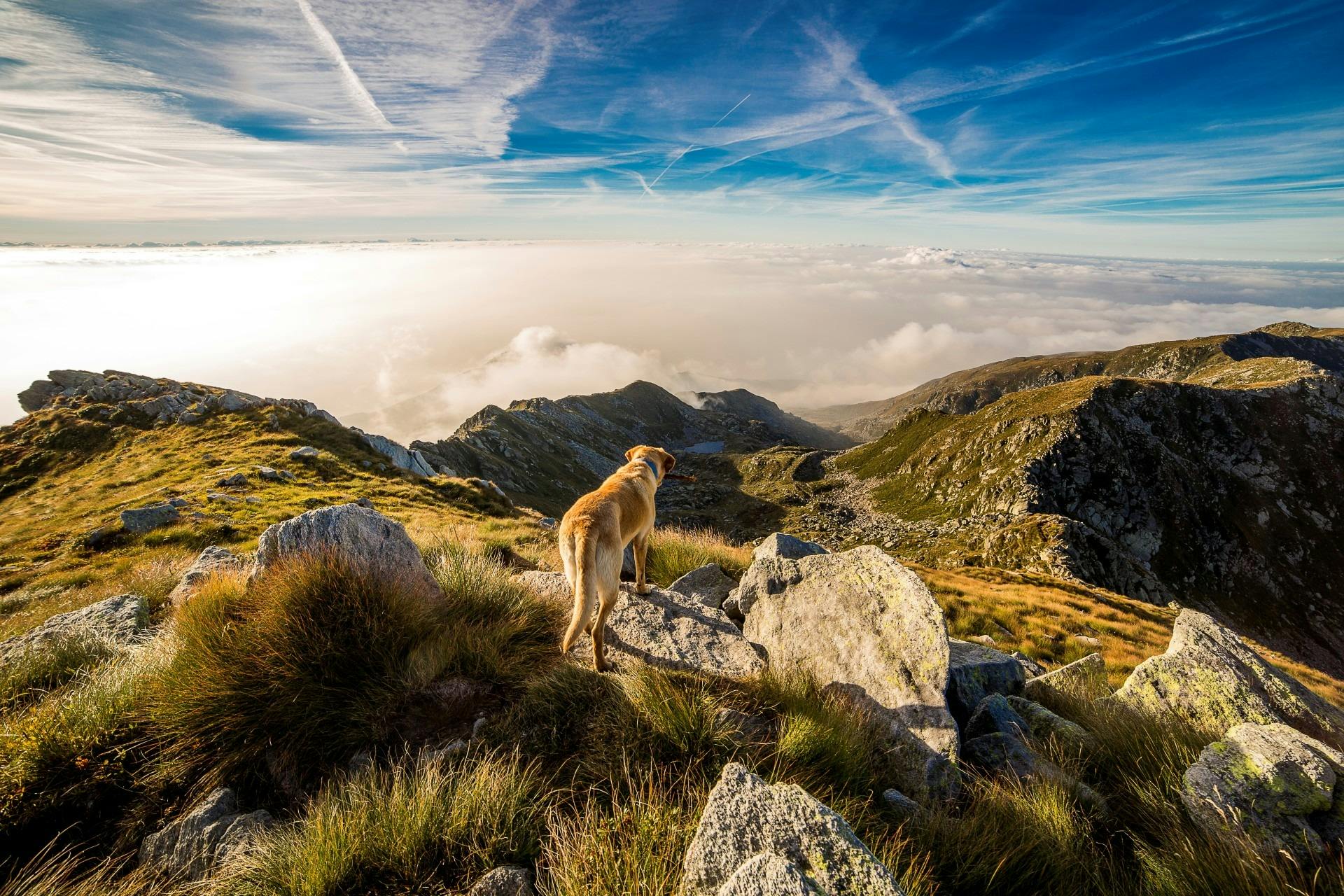
Dilated Cardiomyopathy (DCM) is a condition where the heart becomes enlarged and doesn't pump blood efficiently. This condition usually takes time to develop and can be managed with medication and dietary changes.
Here are some common health conditions to watch out for in South Russian Ovcharkas:
- Arthritis
- Hip dysplasia
- Bloat
- DCM
Regular check-ups with your veterinarian can help identify any potential health issues early on. Keep an eye out for changes in appetite, water consumption, or behavior, such as lethargy, mental dullness, or excessive sleeping.
Daily brushing can help reduce shedding and keep your South Russian Ovcharka clean. Inspect for ticks and fleas daily during the summer or other warm weather. Regular dental care, such as brushing your dog's teeth daily, can also prevent periodontal disease.
Responsible breeders will regularly check their breeding dogs to ensure their puppies are without inherited diseases. By choosing a reputable breeder and following a recommended growth rate, you can help minimize the risk of health problems in your South Russian Ovcharka.
Grooming & Bathing
The South Russian Ovcharka's grooming needs are quite straightforward: frequent brushing will help reduce shedding and keep them clean. They shed year-round, but the shedding kicks into high gear when it gets warm outside.
To keep their coats manageable, most South Russian Ovcharkas require daily brushing. Regular professional grooming sessions can also keep their coats looking good.
Their ears are prone to developing ear infections, so it's essential to regularly check them, especially since they have droopy ears. If you notice that their ears are red or have a bad odor, that might be a sign that your dog has an ear infection.
Their nails should be trimmed if the dog doesn’t wear them out naturally. You'll also want to inspect for ticks and fleas daily during the summer or other warm weather.
Here are some general guidelines for grooming and bathing your South Russian Ovcharka:
- Frequent brushing (daily) to reduce shedding and keep them clean.
- Regular professional grooming sessions to keep their coats looking good.
- Regular ear inspections to prevent ear infections.
- Nail trims as needed.
- Inspect for ticks and fleas daily during warm weather.
Bathing is not a daily necessity, but occasional baths are required if your dog rolls into something smelly or dirty. Before a bath, comb or cut out all mats from their coat, and rinse all soap from the coat to prevent dirt from sticking to soap residue. Most South Russian Ovcharkas don't need to be bathed more than a few times per year.
Training and Socialization
The South Russian Ovcharka is a breed that requires professional training, and the proper training is essential to ensure they can behave appropriately around strangers and animals.
They can be wary and aggressive towards unknown people and animals, so it's crucial to start training early.
Positive reinforcement training methods are ideal, as punishment can lead to increased canine aggression.
Daily exercise is also a must to keep your South Russian Ovcharka in shape, recharge their minds, and prevent boredom, which can lead to naughty behavior.
Playing outside will cure many of their instinctual urges to dig, retrieve, chase, chew, and herd.
Early socialization is also vital to prevent aggression, and exposing your dog to many different people, dogs, sights, and situations will secure a well-rounded dog.
Because they are herding dogs, they will always have a high prey drive, and even with the right training and socialization, they won't be able to resist going after a rabbit or squirrel.
Curious to learn more? Check out: Will Shiba Inu Coin Reach 1 Cent
Frequently Asked Questions
What is the Russian livestock guardian dog?
The Caucasian Shepherd Dog, also known as the Caucasian Ovcharka, is a large livestock guardian dog native to the Caucasus region. It was originally bred in the Soviet Union from dogs of the Caucasus Mountains and Southern Russia.
Are Russian bear dogs legal in the US?
Russian Bear Dogs are not inherently illegal in the US, but local regulations may prohibit ownership in certain areas. Check local laws and regulations before considering ownership.
Sources
- https://www.wisdompanel.com/en-us/dog-breeds/south-russian-ovcharka
- https://parkwoodanimalhospital.com/client-resources/breed-info/south-russian-owtcharka/
- https://www.dogster.com/dog-breeds/south-russian-ovcharka
- https://www.petpaw.com.au/breeds/south-russian-ovcharka/
- https://worlddogfinder.com/breeds/south-russian-shepherd-dog
Featured Images: pexels.com
